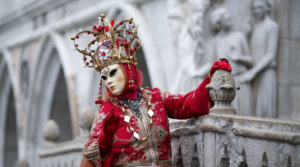 We have discussed Saint Andrew on this blog before and the mysterious and supernatural occurrences surrounding his holy day, November 30th, in Eastern Europe. It is a night for divination, magic and it is believed by many, even today, that witches, werewolves and vampires are at their most power. Andrew was the first called of the apostles who undertook a vigorous mission of evangelization and eventually met martyrdom in the city of Patras being crucified on an X shaped cross that eventually became known as a Saint Andrews cross which is a ubiquitous symbol in Saint Andrew’s iconography. It is understandable that St. Andrew would have such a strong following in the east since according to Christian tradition he travelled extensively in what is today Romania, Ukraine and the Balkan regions of Europe and evangelized the local people. Saint Andrew does have a following in Western Christianity as well. Today I would like to explore the devotion to Saint Andrew that exists in the Galician village of San Andrés de Teixido, in northwestern Spain, to where many devotees make a pilgrimage seeking his miraculous intercession.
We have discussed Saint Andrew on this blog before and the mysterious and supernatural occurrences surrounding his holy day, November 30th, in Eastern Europe. It is a night for divination, magic and it is believed by many, even today, that witches, werewolves and vampires are at their most power. Andrew was the first called of the apostles who undertook a vigorous mission of evangelization and eventually met martyrdom in the city of Patras being crucified on an X shaped cross that eventually became known as a Saint Andrews cross which is a ubiquitous symbol in Saint Andrew’s iconography. It is understandable that St. Andrew would have such a strong following in the east since according to Christian tradition he travelled extensively in what is today Romania, Ukraine and the Balkan regions of Europe and evangelized the local people. Saint Andrew does have a following in Western Christianity as well. Today I would like to explore the devotion to Saint Andrew that exists in the Galician village of San Andrés de Teixido, in northwestern Spain, to where many devotees make a pilgrimage seeking his miraculous intercession.
 San Andrés de Teixido is a small village in the Galician region of Spain with a population of only forty-nine inhabitants yet thousands of pilgrims and curious tourists flock there each year to make the pilgrimage to the church dedicated to Saint Andrew seeking his help or in fulfillment of a promise made to him. There is a popular saying in the Galician language in regards to the pilgrimage to San Andrés, vai de morto quen non foi de vivo, those who didn’t go there in life, will go in death, meaning that if the promise to visit the church of Saint Andrew has not been fulfilled during one’s life, it must be undertook after death is spiritual form before one can go on to a happy afterlife. According to local lore, it is said that many souls of the departed make the pilgrimage to San Andrés in the form of frogs and salamanders. It is even possible for people to make the pilgrimage on behalf of deceased friends and loved ones for the benefit of their souls. Such a custom has existed at least since the Middle Ages as evidenced in the will of a wealthy Galician woman dating from 1391:
San Andrés de Teixido is a small village in the Galician region of Spain with a population of only forty-nine inhabitants yet thousands of pilgrims and curious tourists flock there each year to make the pilgrimage to the church dedicated to Saint Andrew seeking his help or in fulfillment of a promise made to him. There is a popular saying in the Galician language in regards to the pilgrimage to San Andrés, vai de morto quen non foi de vivo, those who didn’t go there in life, will go in death, meaning that if the promise to visit the church of Saint Andrew has not been fulfilled during one’s life, it must be undertook after death is spiritual form before one can go on to a happy afterlife. According to local lore, it is said that many souls of the departed make the pilgrimage to San Andrés in the form of frogs and salamanders. It is even possible for people to make the pilgrimage on behalf of deceased friends and loved ones for the benefit of their souls. Such a custom has existed at least since the Middle Ages as evidenced in the will of a wealthy Galician woman dating from 1391:
I ask that a pilgrimage be undertaken to San Andrés de Teixido, because I have promised it to him, and that a candle be placed on the altar in the shape of a woman of my state.(English translation of original Galician from 1391) |
A popular tradition surrounding the pilgrimage says that pilgrims should bring a rock with them to San Andrés de Teixido and deposit it in one of the rock mounds called milladoiros located near the sanctuary and that on the day of final judgement the rock will speak on their behalf saying that they have made the pilgrimage to San Andrés. Another tradition states that the pilgrim should drink from the fountain located by the sanctuary grounds and make a wish and then throw in a small piece of bread. If the bread floats, then the wish will be granted. It is also customary to return from the pilgrimage with a ramo de San Andrés which is a small bouquet of local herbs and plants bound together that serves as a souvenir of having made the pilgrimage. Despite all the fascinating lore and tradition surrounding the pilgrimage, the main reason one undertakes the pilgrimage is to seek the intercession, protection and blessing of Saint Andrew whose example of faith, love and charity we should strive to follow.
I hope you have enjoyed learning about the pilgrimage to San Andres de Teixido. As always, I wish you peace, happiness and abundant blessings!
Weight Loss Magic by James Duvalier
I am pleased to shared with you my latest book on the subject of Weight Loss Magic now available on amazon.com. Also, anyone who orders a service from me will receive a copy of Weight Loss Magic or any of the other books I’ve written upon request.
 Weight Loss Magic by James Duvalier is a comprehensive collection of one hundred spells, rituals and magical baths meant to bring about rapid and healthy weight loss. The author presents these simple and highly effective workings that will make the numbers on the scale drop quickly and effortlessly interspersing them with interesting anecdotes of his personal weight loss efforts and those of the people helped by the spells in this collection.
Weight Loss Magic by James Duvalier is a comprehensive collection of one hundred spells, rituals and magical baths meant to bring about rapid and healthy weight loss. The author presents these simple and highly effective workings that will make the numbers on the scale drop quickly and effortlessly interspersing them with interesting anecdotes of his personal weight loss efforts and those of the people helped by the spells in this collection.
Breaking the Habit Spell
Admittedly we all have at least one unhealthy habit we would like to break. It could be unhealthy eating, smoking or excessive worry or any other habit that holds up back from good health and happiness. Whatever these unhealthy habits may be, the following spell is meant to break them. I also find performing this particular spell highly therapeutic!
You will need:
One pillow case, a towel or piece of cloth that can be tied
A glass dish or plate
A piece of paper and pen
Think for a moment about all the habits and you would like to break. Think of the roots of your issues possibly going back to childhood. Write all of this on the paper.
Place the paper into the pillow case or cloth and place the plate inside as well.
Tie the pillow case or cloth closed and say, “I now break all unhealthy habits that hold me back in life. I am powerful!”
Smash the plate inside the pillow case or cloth repeatedly on the floor until it is broken into many tiny pieces. Then dispose of it thereby ridding yourself of these unhealthy and counterproductive habits forever!
Carnival Season
 January has never been my favorite month. I have always seen this time of year as a long cold stretch of days where very little that is interesting happens. In contrast, my favorite time of year is the period between October and the end of December which is filled with holidays and celebrations and the air is permeated with magic and excitement. By the end of January and into February, I begin to look forward to the Carnival Season which is a time or magic, merriment, decadence and excess which provides much welcome relief from the long dragging days of winter. In the United States, we are most familiar with Mardi Gras in New Orleans, but Carnival is in fact celebrated in many places around the world in a variety of ways and traditionally was a period of indulgence and letting loose before the rigorous fasting and penitence of Lent began. It may seem strange to discuss Carnival here, since this blog is dedicated to spiritual and magical matters, but I feel that Carnival itself is a season of magic and happiness and therefore should be embraced and celebrated.
January has never been my favorite month. I have always seen this time of year as a long cold stretch of days where very little that is interesting happens. In contrast, my favorite time of year is the period between October and the end of December which is filled with holidays and celebrations and the air is permeated with magic and excitement. By the end of January and into February, I begin to look forward to the Carnival Season which is a time or magic, merriment, decadence and excess which provides much welcome relief from the long dragging days of winter. In the United States, we are most familiar with Mardi Gras in New Orleans, but Carnival is in fact celebrated in many places around the world in a variety of ways and traditionally was a period of indulgence and letting loose before the rigorous fasting and penitence of Lent began. It may seem strange to discuss Carnival here, since this blog is dedicated to spiritual and magical matters, but I feel that Carnival itself is a season of magic and happiness and therefore should be embraced and celebrated.
 Carnival is believed to have been celebrated as early as the 4th century as Christianity spread throughout Europe and the penitential season of Lent was kept by large segments of the population. Carnival was never a church sponsored celebration but an example of European folk culture possibly retaining elements of pre-Christian festivals. Lent was, and still is for many Christians, a season of strict penance and abstinence in preparation for Easter and the preceding Carnival period was a time to consume meat, alcohol and pastries in excess. It also became common to wear masks and costumes for an added sense of excitement and anonymity. Some Carnival celebrations became absolutely orgiastic and certainly by the 20th century there was an element of political satire and criticism of those in power which lend to the suppression if not outright banning of Carnival celebrations in fascist regimes such as that of Francisco Franco in Spain. Today Carnival remains a season of merriment, revelry and magic during which people often allow themselves to express desires and aspects of their personalities that often remain hidden the rest of the year.
Carnival is believed to have been celebrated as early as the 4th century as Christianity spread throughout Europe and the penitential season of Lent was kept by large segments of the population. Carnival was never a church sponsored celebration but an example of European folk culture possibly retaining elements of pre-Christian festivals. Lent was, and still is for many Christians, a season of strict penance and abstinence in preparation for Easter and the preceding Carnival period was a time to consume meat, alcohol and pastries in excess. It also became common to wear masks and costumes for an added sense of excitement and anonymity. Some Carnival celebrations became absolutely orgiastic and certainly by the 20th century there was an element of political satire and criticism of those in power which lend to the suppression if not outright banning of Carnival celebrations in fascist regimes such as that of Francisco Franco in Spain. Today Carnival remains a season of merriment, revelry and magic during which people often allow themselves to express desires and aspects of their personalities that often remain hidden the rest of the year.
Carnival technically begins on January 6th, the Feast of the Epiphany, which is the closing of the Christmas season and lasts until Fat Tuesday, the day before Ash Wednesday which marks the beginning of Lent. As Fat Tuesday approaches the costume balls and parades intensify and become more decadent and extravagant. There are many traditions particular to different parts of the world. In England, it is common to make pancakes on Fat Tuesday in remembrance of a legend surrounding a housewife in the village on Olney in Buckinghamshire in 1445 who was making pancakes and realized she was late for a church service and ran from the house still carrying the pancakes in the frying pan. To this day in Olney, there is a race through the village center where local women run carrying frying pans and pancakes. In Venice, Italy, which is known for its large and extravagant Carnival, it is a custom to wear garish and elaborate costumes and masks that preserve one’s anonymity on that night. New Orleans is known for its lavish parades with participants bedecked in spectacular costumes that often take an entire year to make. New Orleans’ Mardi Gras events and parades are organized by local guilds known as “krewes” to whom certain families have belong for many generations. It is also a tradition to throw strands of purple, green and gold beads symbolizing justice, faith and power respectively to those attending the parades. In Poland, Austria and Germany it is common to make donuts in the days preceding Fat Tuesday, a custom dating back to the days when Lent was rigorously observed and people wanted to use all remaining lard and dairy products before the coming fast. In Spain, at the end of Carnival on Ash Wednesday, in many locations there exists a tradition where a sardine or an artistic representation thereof in buried in a mock funeral procession representing the end of the season of excess and the beginning of Lent when penance and sacrifice lead to new life. There are just a few examples of the traditions surrounding the Carnival season as wherever it is celebrated, this magical time of year takes on its own local spirit and flavor.
I hope you have enjoyed this post about the Carnival season and that you do something decadent and indulgent to celebrate this magical and special time of year. As always I wish you peace, happiness and abundant blessings!
Lembrança do Senhor do Bonfim
 In early November of 2001, while I was living in Spain and attending university, I took a trip to northern Portugal as a requirement for the Portuguese language class I was taking. We left Madrid on November 1st, the Feast of All Saints, and meandered by microbus through Spanish villages dotted with cemeteries overflowing with flowers and candles placed on that holy day as offerings for the dear departed. We passed though the dense, mysterious and undeniably haunted woods of Galicia into northern Portugal. We spent a few late autumn days walking through the charming cobblestone streets of Ponte da Lima, Viana do Castelo and Braga. One evening, my classmates, my teacher and I came upon a souvenir stand in the central plaza that was selling all kinds of trinkets among which were a variety of colorful ribbons with the words “Lembrança do Senhor do Bonfim,” Memory of the Lord of Bonfim printed on them. Out teacher explained that these were wish ribbons that originally came from Brazil but had since spread all over the world. Tradition dictates that a friend must tie the ribbon onto your wrist with three knots while you make three wishes and the ribbon must be worn until it falls off on its own. Of course we all loved the idea of having wishes fulfilled, so we bought these ribbons and began tying them onto each other’s wrists in a delightful wish-making frenzy. I honestly do not remember the wish that I made, but I have heard from others over the years that many wishes have been fulfilled and blessings granted by wearing the lembrança.
In early November of 2001, while I was living in Spain and attending university, I took a trip to northern Portugal as a requirement for the Portuguese language class I was taking. We left Madrid on November 1st, the Feast of All Saints, and meandered by microbus through Spanish villages dotted with cemeteries overflowing with flowers and candles placed on that holy day as offerings for the dear departed. We passed though the dense, mysterious and undeniably haunted woods of Galicia into northern Portugal. We spent a few late autumn days walking through the charming cobblestone streets of Ponte da Lima, Viana do Castelo and Braga. One evening, my classmates, my teacher and I came upon a souvenir stand in the central plaza that was selling all kinds of trinkets among which were a variety of colorful ribbons with the words “Lembrança do Senhor do Bonfim,” Memory of the Lord of Bonfim printed on them. Out teacher explained that these were wish ribbons that originally came from Brazil but had since spread all over the world. Tradition dictates that a friend must tie the ribbon onto your wrist with three knots while you make three wishes and the ribbon must be worn until it falls off on its own. Of course we all loved the idea of having wishes fulfilled, so we bought these ribbons and began tying them onto each other’s wrists in a delightful wish-making frenzy. I honestly do not remember the wish that I made, but I have heard from others over the years that many wishes have been fulfilled and blessings granted by wearing the lembrança.
 The lembrança, which directly translates from Portuguese as “memory” or “souvenir” comes from Salvador da Bahía, a city in northeastern Brazil, in particular from the church of Our Lord of Bonfim which dates back to 1745. Around that time, a Portuguese sea captain brought a statue of Our Lord of Bonfim to Salvador and a church was built around it in fulfillment of a promise he had made and in thanksgiving for the divine help he had received. Immediately, many healings and other miracles were reported at the church and its reputation spread far and wide. Starting in the early 1800’s, it became common for people to bring colorful ribbons back from The Church of the Lord of Bonfim as a memory of their pilgrimage there. The ribbons were exactly 47 centimeters long which is the length of the arm of the statue of Our Lord of Bonfim. It is not exactly known when the tradition of making wishes became associated with the lembrança, but it was certainly in place by the 1960’s when these colorful ribbons became a ubiquitous symbol of the hippie culture in Brazil and throughout Latin America. Today the lembrança can be found in many parts of the world and is a sign of faith, friendship and love.
The lembrança, which directly translates from Portuguese as “memory” or “souvenir” comes from Salvador da Bahía, a city in northeastern Brazil, in particular from the church of Our Lord of Bonfim which dates back to 1745. Around that time, a Portuguese sea captain brought a statue of Our Lord of Bonfim to Salvador and a church was built around it in fulfillment of a promise he had made and in thanksgiving for the divine help he had received. Immediately, many healings and other miracles were reported at the church and its reputation spread far and wide. Starting in the early 1800’s, it became common for people to bring colorful ribbons back from The Church of the Lord of Bonfim as a memory of their pilgrimage there. The ribbons were exactly 47 centimeters long which is the length of the arm of the statue of Our Lord of Bonfim. It is not exactly known when the tradition of making wishes became associated with the lembrança, but it was certainly in place by the 1960’s when these colorful ribbons became a ubiquitous symbol of the hippie culture in Brazil and throughout Latin America. Today the lembrança can be found in many parts of the world and is a sign of faith, friendship and love.
It is said that the different colors of the ribbons are intended to help manifest different types of wishes. Truthfully, I feel that this is a recent development in the tradition of the lembrança and that any color ribbon can be used for any purpose as long as it is placed and worn with love, faith, hope and respect. Just for reference sake, I will include a list of the colors of the lembrança and their purported significances: White: peace, calm, cleansing, and stability. Red: Love, passion, desire and power. Light Green: Youth, health, rebirth and renewed energy. Dark Green: virility, masculinity and male strength. Yellow: money, wealth, new opportunities in business and a desire to grow rich. Orange: Success in career, achieving personal goals. Blue: Peace, harmony, stability, loyalty in a relationship. Dark Pink: Passion, love, relationship and marriage. Light pink: gentle love, kindness, feminine energy and sweetness. Again, it is my opinion that these color associations are more a product of the new age movement and not traditionally associated with the lembrança, but I have included them just for reference sake.
The proper way to place the lembrança is to have a friend tie it onto your wrist with three knots while you make three wishes. You could also repeat the same wish three times for reinforcement. I like the aspect of having a friend tie the lembrança, since it fosters friendship and allows for a moment of spiritual connection. The lembrança is worn until it falls of naturally which can take several months. It is said that by the time the lembrança falls off your wishes will have been granted in their entirety, but they have been known to manifest even while the lembrança is still beging worn. In such cases, it is still a good idea to wear the lembrança until it falls off to complete the process and as a sign of gratitude for the wish granted.
I hope you have enjoyed this post on the lembrança and that if you ever encounter these ribbons that you give them a try. If worn with faith, hope and love, I have no doubt that your wishes will be granted. I thank you for taking the time to visit my blog and as always I wish you peace, happiness and abundant blessings.